Our secret weapon—OneNote for sharing, collaborating and assessing
This post was written by Steffi Svendsen, teacher and Microsoft Innovative Educator Expert at the Skjetten Primary School in Norway.
Living in the 21st century, the use of technology plays an important role in education. And I can understand why school leaders, educators, students and parents feel overwhelmed when they are introduced to new tools, programs, apps and so forth if the main focus is on the shifting to the new technology, rather than implementing the right technology. However, at Skjetten Primary School we all have one secret weapon—OneNote!
From my perspective, OneNote is the best educational tool, with so many useful tools just waiting to be discovered and used in new and exciting ways. However, I would also like to bring the school as a whole into this educational use of OneNote. Not only are OneNote notebooks easily shared, through Office 365, but OneNote also has a lot of nifty collaboration and assessment features; no matter what device you use.
Since Office 365 is cloud-based, the school leaders can share OneNote notebooks to administrate the school in real-time collaboration. The leaders at our school use OneNote to maximize their time, thus they can spend more time on the core business—teaching and learning.
School leaders gain administrative efficiency, time to impact learning
School leaders maintain “Administrative-meetings” notebooks to share agendas, notes and documents for upcoming meetings. By doing so, staff can prepare for meetings or follow the meeting virtually when unable to attend in person.
Another nifty tool is the “Send to OneNote” feature. As a team leader, I can send emails directly from Outlook to our shared OneNote notebook and keep the team updated at all times. Outlook also lets you create tasks and assign them to a specific team member. So everyone knows what to do and when they are expected to be done with the task.
Research shows that it is important for school leaders to be engaged with their teaching staff. Professor Viviane Robinson and Dr. Margie Hohepa (2009) found that school leaders have twice the impact on the students, if they promote and/or participate in effective teacher professional learning. After our school leaders started using OneNote they improved their leadership just by making their meetings more organized and effective. They now have more time to focus and discuss, and even participate in, the professional learning development at our school. They have altered their leadership which, enhances the learning of both teachers and students at the Skjetten Primary School.
Teacher teams collaborate on lesson plans
Our teachers work in teams by grade level—1st-grade teachers are one team, 3rd-grade teachers are a team and so forth. Since we started using OneNote, teachers have made staff time more effective and organized by collaborating in a shared OneNote “Team” notebook. Each team sets up their own notebook, enabling them to share lesson plans, timetables, curriculum, student information, events and information from weekly team meetings, just to name a few.
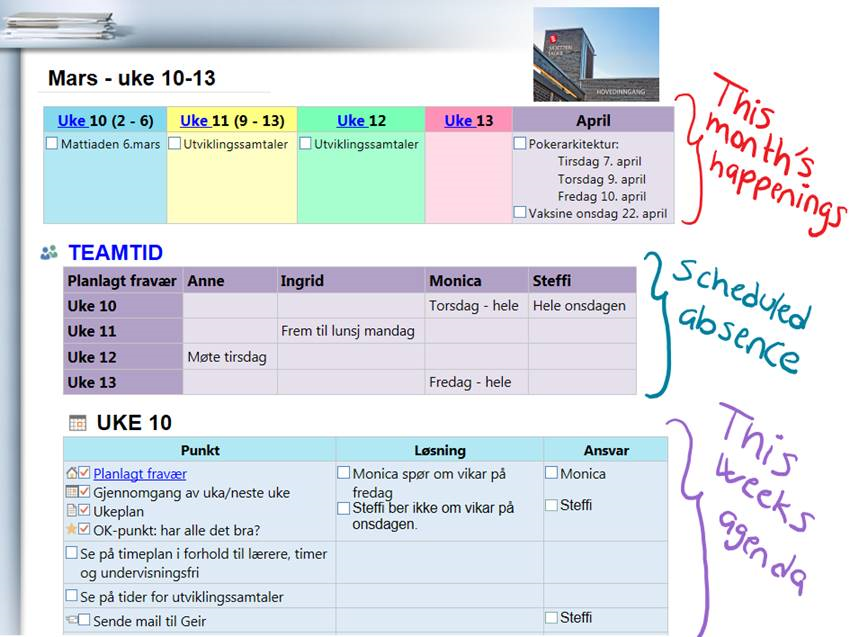
OneNote Team page. Each month we start with a new main page containing a general overview including events, meetings and a table for scheduled absence, which is linked to the weekly agendas for that month.
And in terms of saving time, the OneNote search engine is a true gem. The built-in search function not only allows you to search for keywords and text, it even allows you to search for words inside audio and video recordings. This is great if you have audio and video recordings from classes. You can also narrow or widen your search.
“Teacher Sheets” as a content library for students
When our school started using Office 365, sharing OneNote notebooks with our students became simpler, as a result we created a read-only “Teacher Sheets” notebook. This has been a huge time saver for teachers and students. Teachers can easily copy lesson plans, information, homework, worksheets, answer keys, group overviews etc. into this shared notebook, and students can just as easily copy and paste the specific pages into their own notebooks. Our teaching has become more effective, and it maximizes the time students are engaged with their tasks in the classroom, which again is important in relations to student’s outcome.
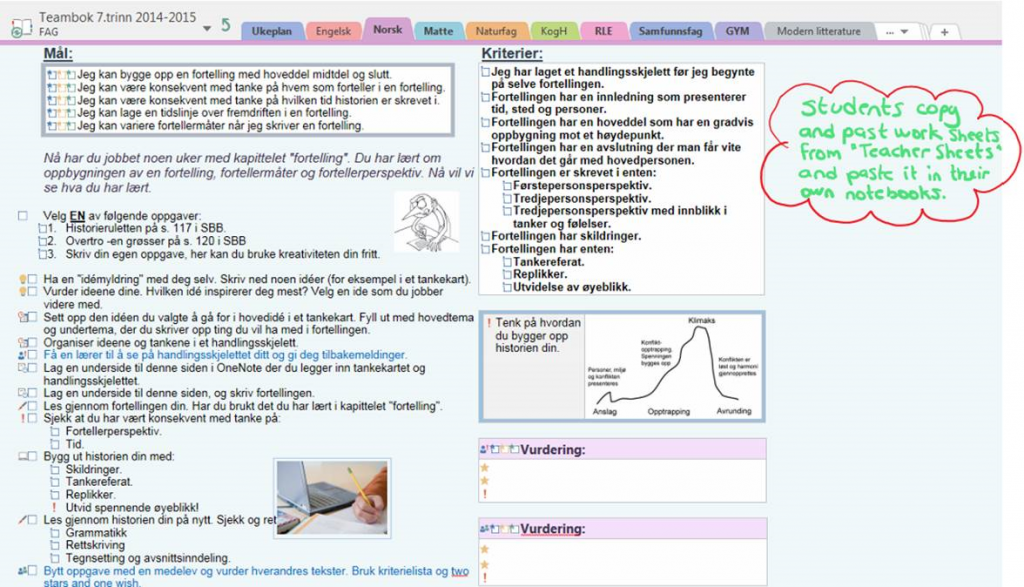
OneNote Teacher Sheets notebook. Regardless of subject matter or grade level, the OneNote pages usually contain goals, a work list, criteria and assessment criteria.
Using OneNote and custom tags for assessments
Our formative assessments, in every subject matter and every grade level, allows us to monitor student learning and to provide ongoing feedback. OneNote in the classroom is a marvelous tool when it comes to formative assessment. Teachers always have access to students’ shared so they can see what students are working on, where they are at, and what the teachers needs to work on to help them reach their learning goals.
I also believe it is important to teach the students how to assess themselves, becoming metacognitive, and thus become aware of their own learning process. Teaching children self-assessment in the classroom will benefit them in the future. They must know how to monitor their performance when working with new learning activities, and how to reach the new goals. Learning to assess to what degree they have met the target is therefore of great importance. And OneNote makes this development easier.
At the Skjetten Primary School, we use two stars and one wish in assessment, to provide feedback on students’ work and to facilitate peer assessment and self-assessment.

We also use customized tags to measure to what degree the students have met their learning objectives.

Both of these methods are not only effective in terms of assessment for learning, it also makes the feedback more visual for those involved.
Student collaboration with OneNote
Our students also create, share and collaborate on a regular basis. Here are some examples how 7th graders at the Skjetten Primary School use OneNote.
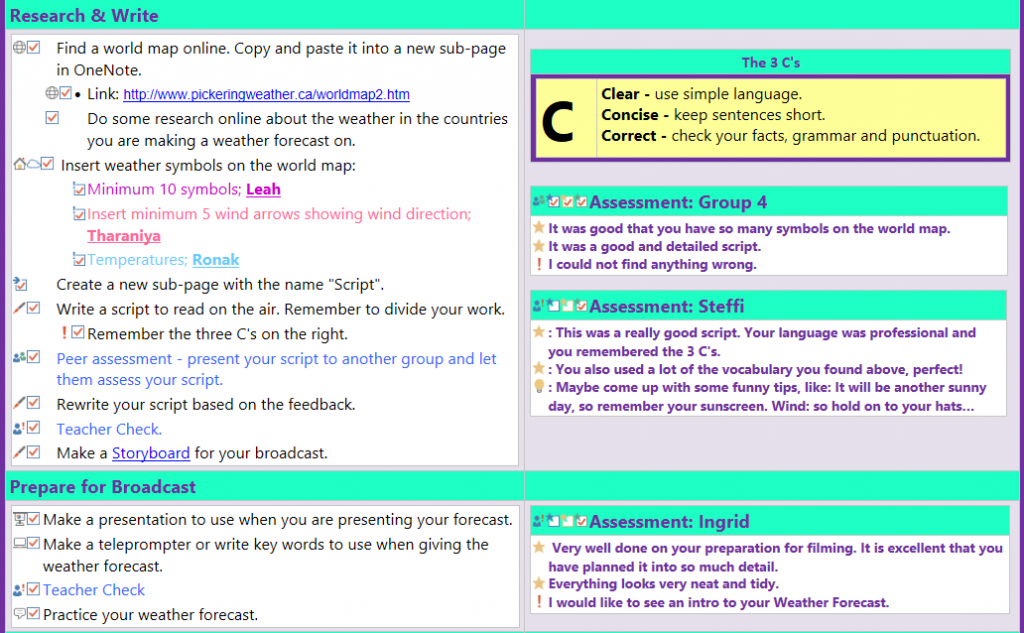
OneNote page illustrating how students collaborate with each other and the teacher during a group project.
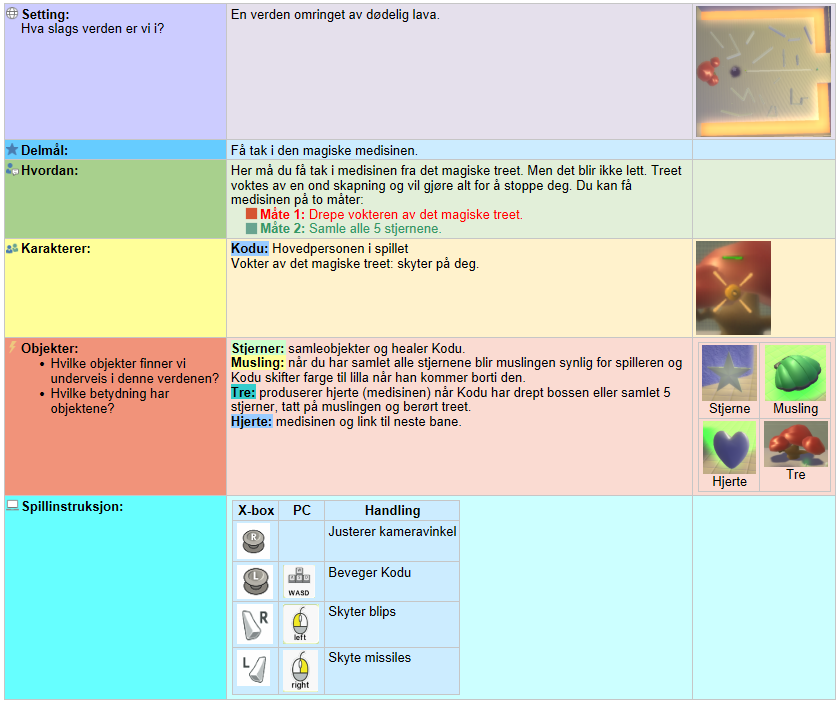
Shared notebook where students created a storyboard. When students work on a group project they usually create a shared notebook for the project so everyone has access to the work.
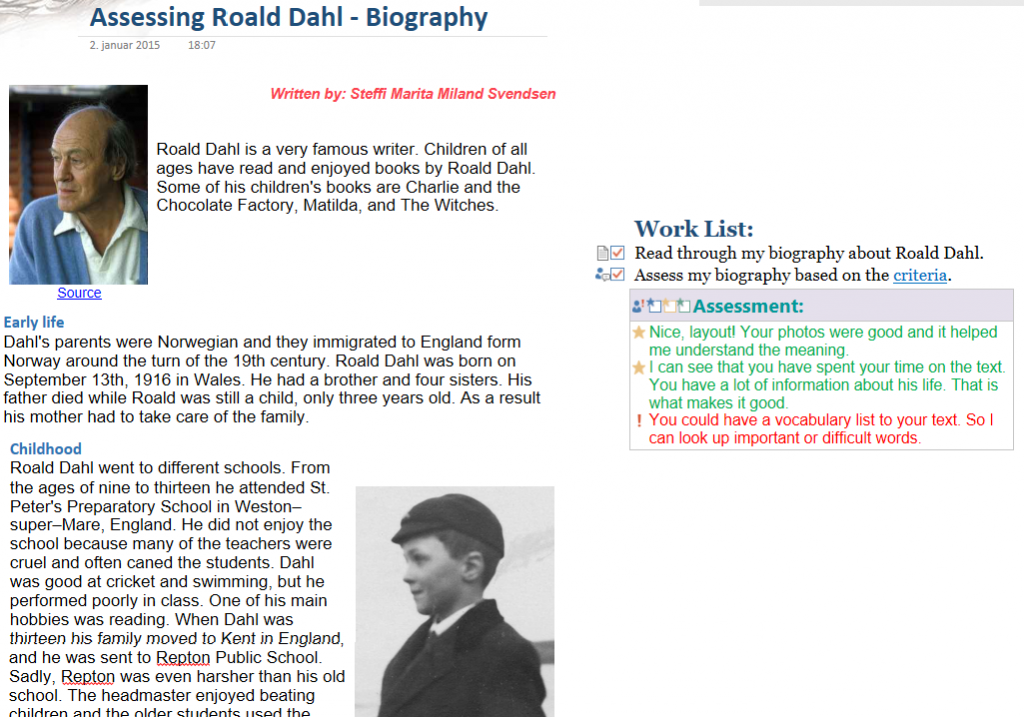
Example showing how you can address assessment and feedback. Before we started our Biography-Project, students had to read a biography and assess the text based on the criteria—using two stars and one wish. This forces students to reflect upon why they assess the way they do. As you can see from the picture on the left this student is very good at being specific and concrete.
Collaborating with parents
Collaboration and assessment also includes the students’ parents. For example, I use OneNote to prepare for my teacher-parent conferences. This approach is highly effective, timesaving, organized and visually presented on the SMART Board. I also send assessments directly to parents by the end of our meeting through the OneNote-Outlook integration. Parents and I have the same notes from our teacher-parent conference; assessments, feedback, where the child is at, what the next step is, input from both parents and students etc.
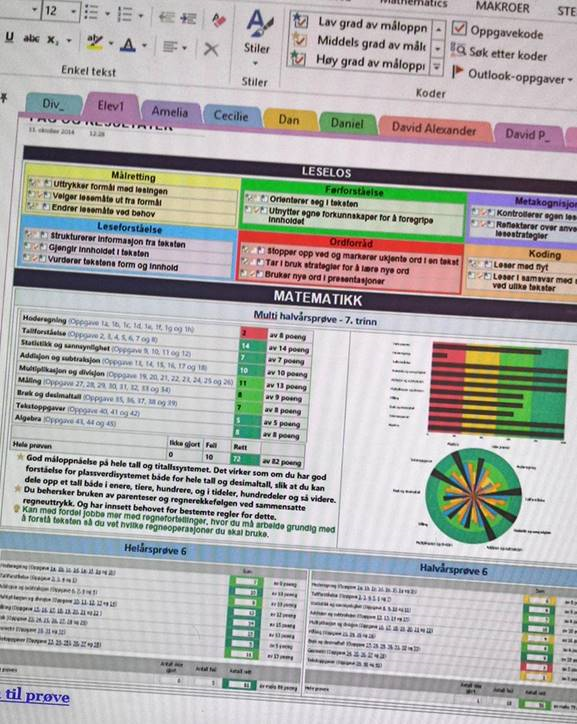
So as you can see, OneNote really is a secret weapon and these are just a few of MANY ways and reasons for why OneNote should be used in education.
